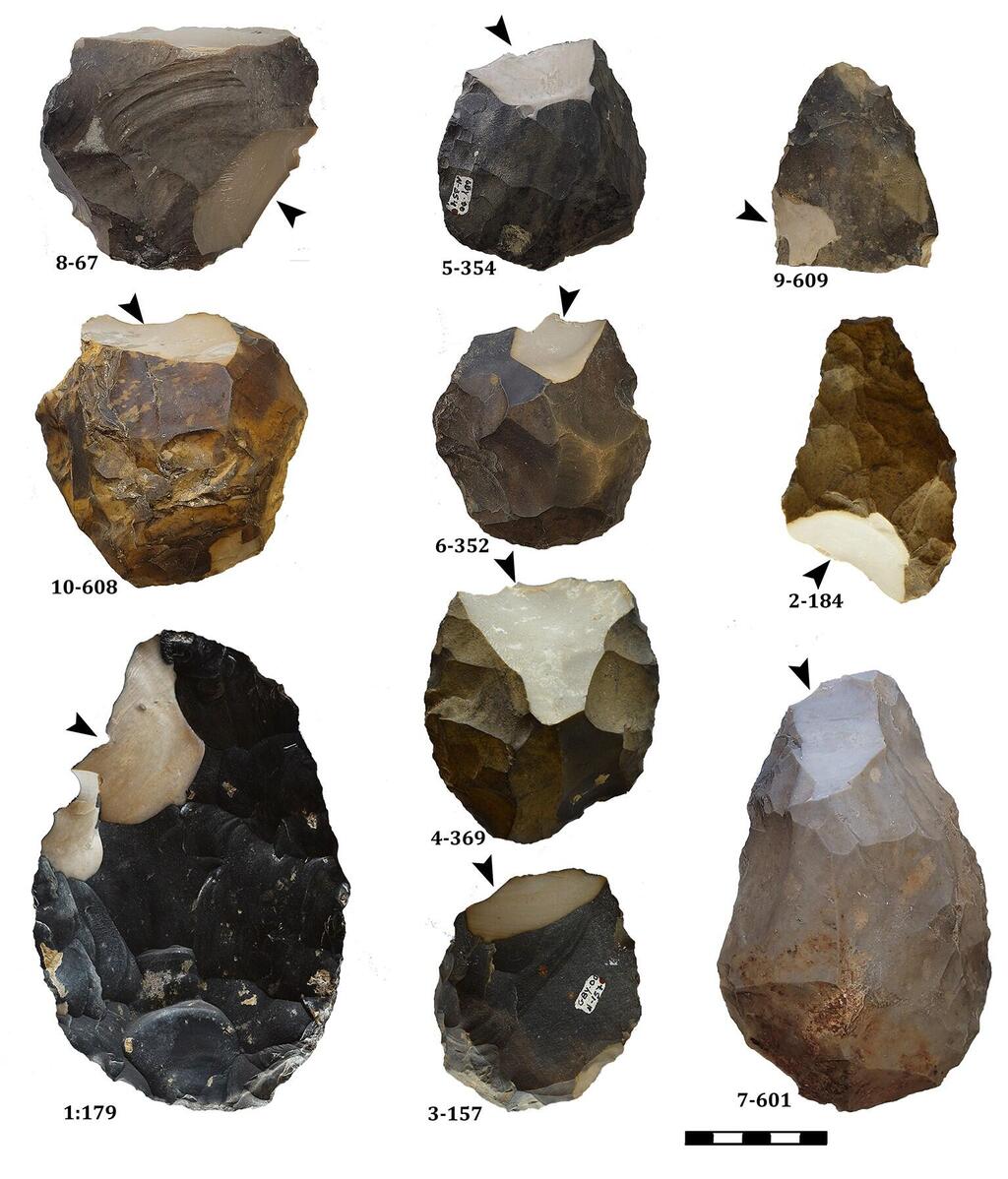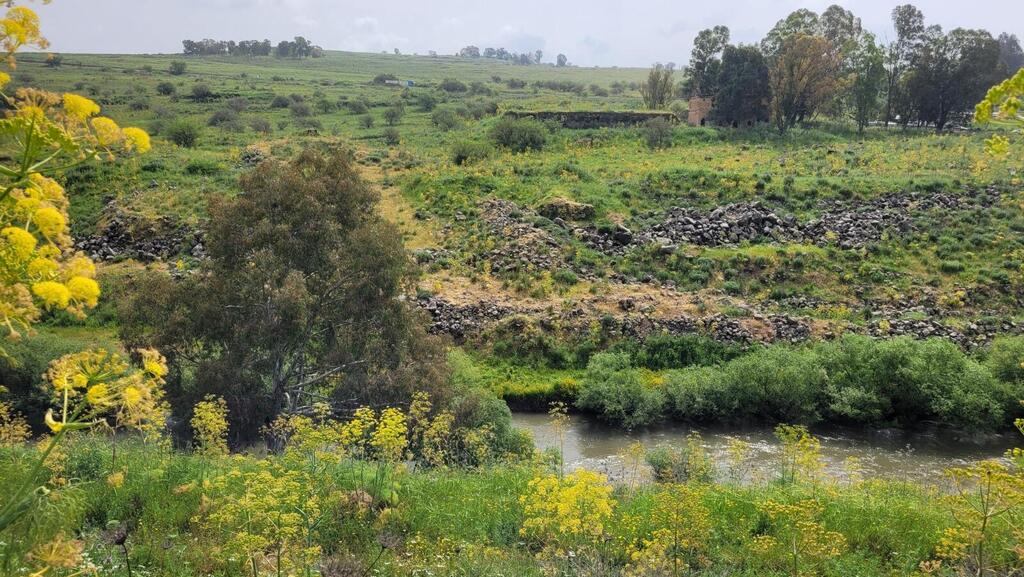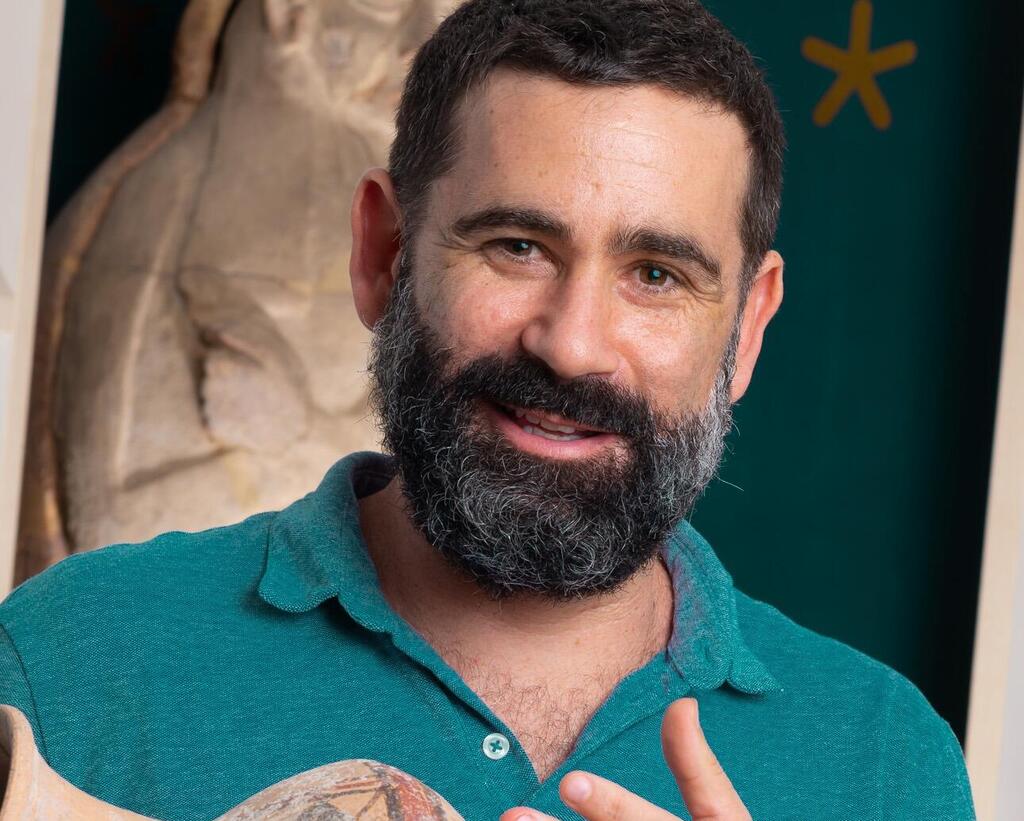What is the origin of the flint used by ancient humans to make hand axes? A new study conducted on tools found in northern Israel's Hula Valley identified their geochemical signature and located the source of material using artificial Intelligence.
More stories:
According to the findings, the source of the high-quality flint was at a distance of 20 kilometers(over 12 miles) from their stone age settlement.
3 View gallery


Hand axes found in the Hula Valley, Ma'ayan Baruch, and Gesher Benot Yaakov
(Photo: Tel Aviv University)
"Our findings indicate high social and cognitive capabilities of ancient humans: they were familiar with their environment and available resources, invested significant effort to obtain the required high-quality material, planned and executed journeys over long distances, and passed on vital knowledge from generation to generation," Researchers at Tel Aviv University said.
The study, led by Dr. Meir Finkel from the Department of Archaeology and Ancient Near Eastern Cultures and Prof. Gonen Sharon from Tel-Hai Academic College, in collaboration with Prof. Erez Ben-Yosef also from Tel Aviv University, Dr. Oded Bar and Dr. Yoav Ben-Dor from the Geological Survey of Israel, and Ofir Tirosh from the Hebrew University in Jerusalem, was recently published in the journal "Geoarchaeology."
"The Hula Valley is known worldwide as a hub of prehistoric sites, inhabited by ancient humans around 750,000 years ago," Dr. Finkel said attributing that to the location with is situated on the northward migration route from Africa along the Dead Sea Rift, and where ancient humans found an abundance of water, vegetation, and wildlife. "The ancient residents left behind, among other things, thousands of hand axes - flint stones fashioned to fit the hold of human hands that are among the oldest man-made tools."
Finkel described the axes as an ancient version of the Swiss pocket knife, serving a wide range of functions including cutting meat and digging for water and roots, among others uses. "These are universal tools that were used in many places in the ancient world, in Africa, Asia, and Europe, over the course of a million and a half years," he said.
The researchers attempted to identify the source of the raw material used to produce approximately 3,500 hand axes found scattered in one site and thousands more in other locations in the area.
"The average length of the hand axes is over ten centimeters (4 inches) and they weigh around 200 grams each, but we know that to manufacture them raw material weighing about five times that, is needed," Professor Gonen Sharon said adding that by a simple calculation, he deduced that to produce the 3,500 hand axes, more than three and a half tons of flint would be needed.
So where did the ancients find such a large quantity of flint? Sharon said the research used innovative methods available today: advanced chemical analysis and an artificial intelligence algorithm specially designed to solve the mystery.
They collected samples from 20 hand axes found in two sites, ground them into powder, and dissolved the powder in acid in a clean laboratory. Then, they measured the concentrations of about forty different chemical elements in each sample using an "Inductively Coupled Plasma Mass Spectrometer," which allows efficient and precise measurements of elements over a wide concentration range, down to the resolution of parts per billion.
At the same time, the researchers conducted a geological survey, searching for potential stone sources throughout the Hula Valley and its surroundings, including exposed rocks in the Galilee and on the Golan Heights, as well as the sedimentary rocks carried into the Hula Valley by the Jordan River and other streams flowing into the valley.
This systematic review allowed the researchers to identify possible sources of the rock that was available to the people at the time. Rock samples collected from all potential sources were also examined using the mass spectrometer to enable comparison and correlation with the hand axes.
"The complex process, starting with the collection and preparation of the samples and ending with the chemical analysis, yielded a vast amount of data for each sample," Geologist Dr. Yoav Ben Dor said. "To find the best fit between the artifacts and the rock samples, we developed a dedicated algorithm based on multiple computational stages, alongside machine learning models. This allowed us to categorize the archaeological items based on the geological sample data."
Finkel said that the process matched all 20 archaeological artifacts to the local rock from the Acheulian period found in Ramat Dishon, about 20 km west of the sites where the axes were found. Ancient flint knapping sites were also found, indicating that the area served as a source of raw material for hundreds of thousands of years."
"Our findings clearly demonstrate the high cognitive and social abilities of the humans who lived in the Hula Valley hundreds of thousands of years ago, most likely Homo erectus. In order to obtain suitable raw materials for producing essential hand axes, they planned and executed journeys of up to 20 km, involving a clime to 70 to 800 meters above sea level," the researchers said adding that the prehistoric residents of the area, passed down this vital knowledge from generation to generation, over dozens and even hundreds of thousands of years. "All of this provides evidence of advanced ingenuity, beyond the current estimates regarding the capabilities of ancient humans during such an early period," Professor Erez Ben Yosef from Tel Aviv U. said.



